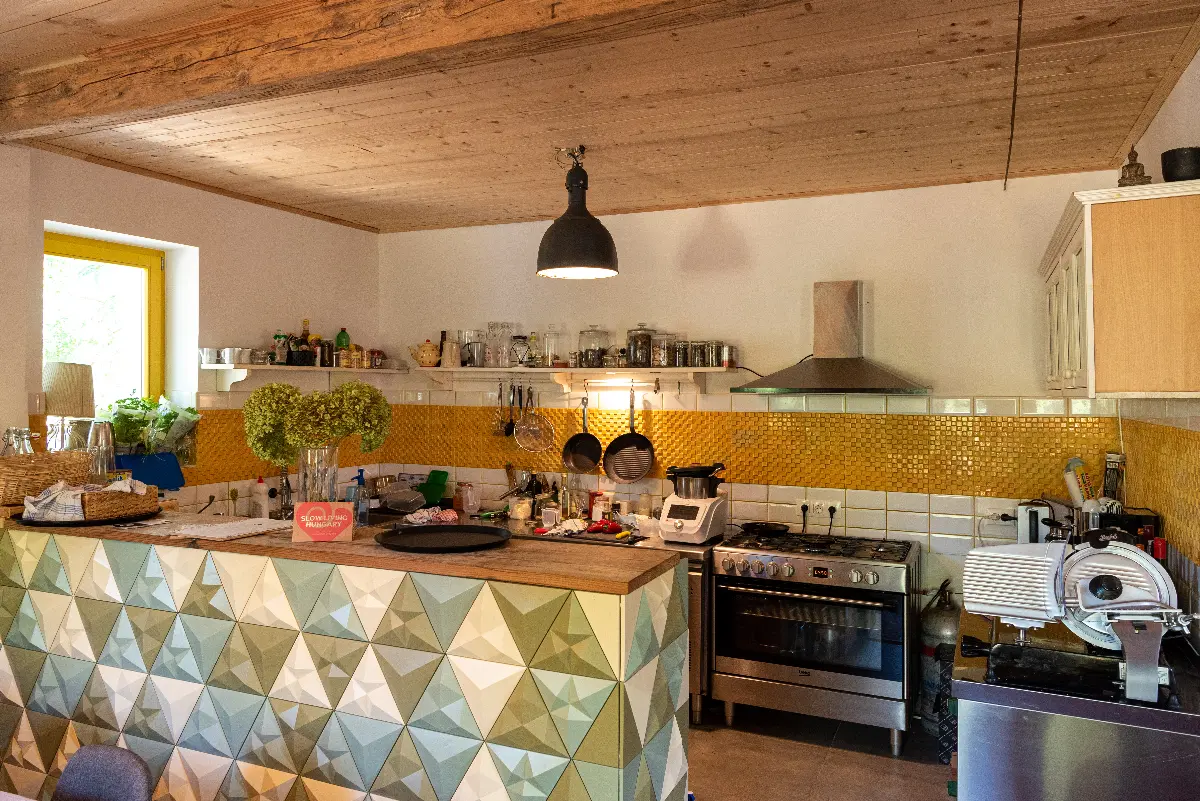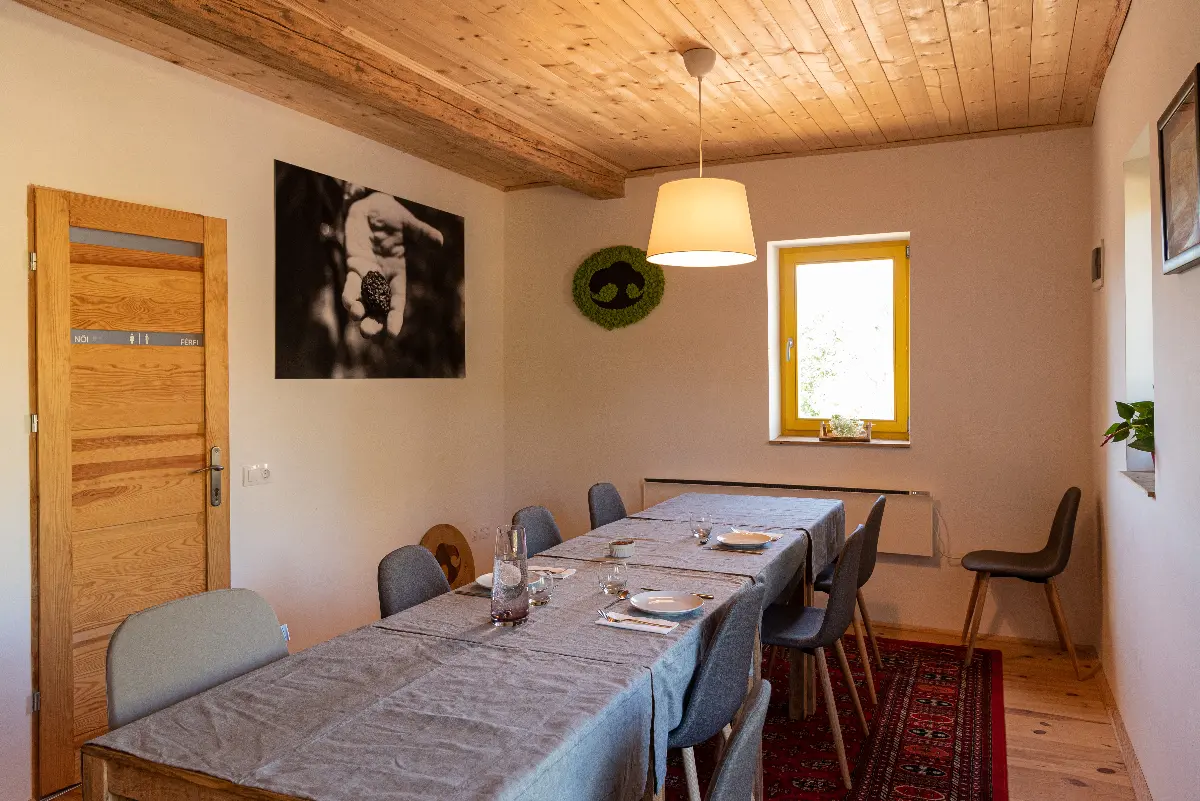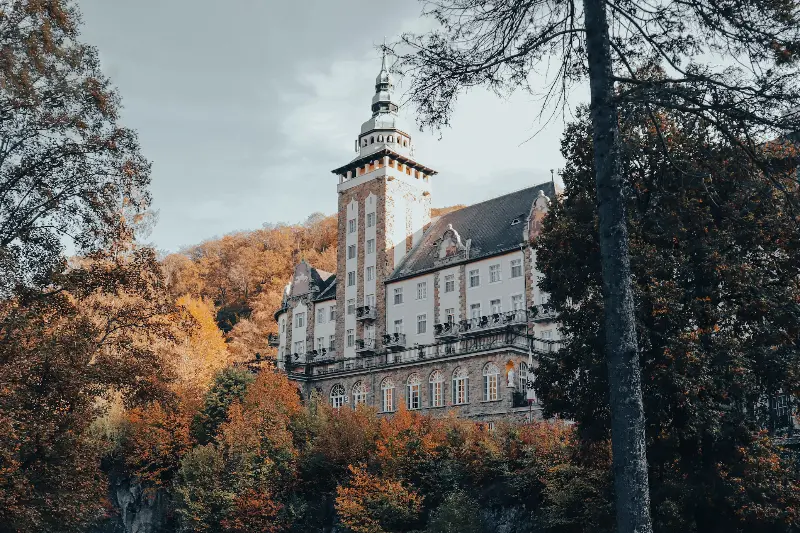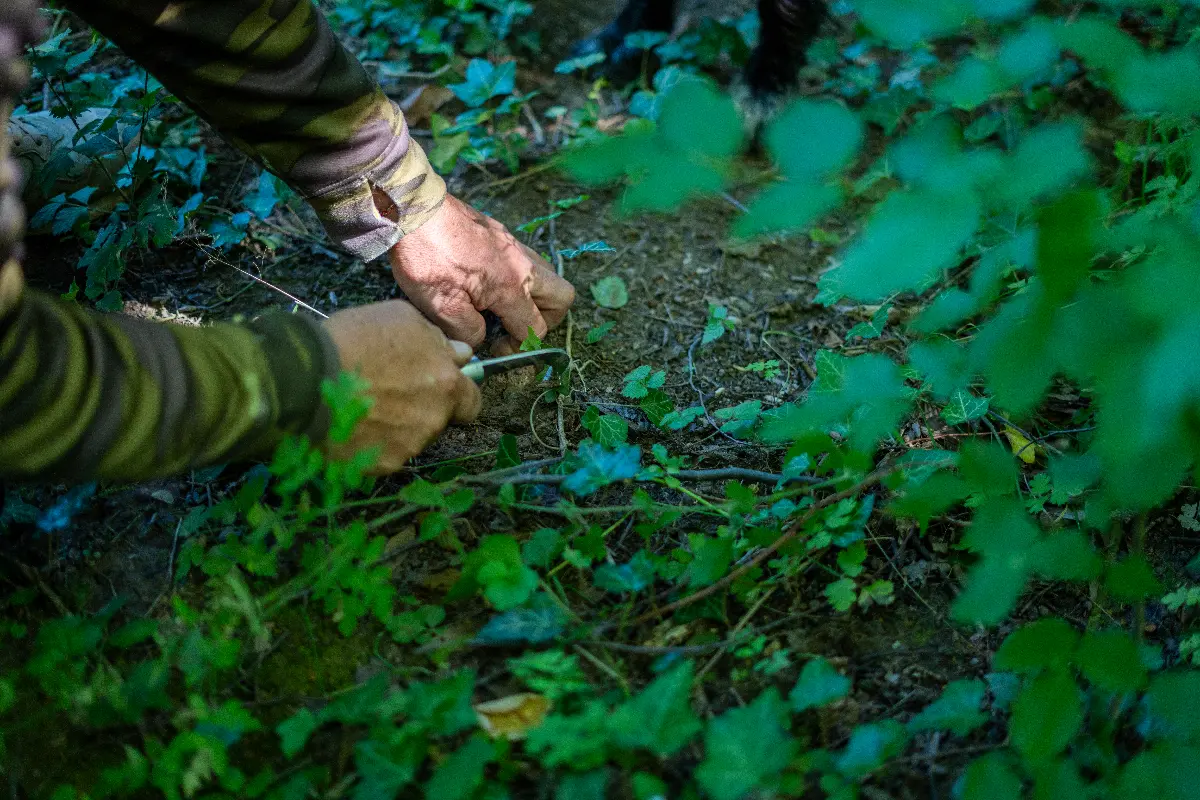
Helyszín címkék:
Go truffle hunting with Triflafater in Palkonya!
Szabó Sára
“Even before the Second World War, Hungary was already one of Europe’s most important truffle exporters, and in the last twenty years, we have begun to rediscover our potential. It can be seen that the Hungarian climate is favourable for different truffle species. We mainly concentrate on summer, winter, large-spore and sand truffles, but thanks to the increasingly warm climate, we also have the Ferrari of the triflas, the Istrian variety.Mushrooms are particularly fond of the southern, Mediterranean regions, which is just right from a gastronomic point of view, since the Villány wine region is considered a Mecca of flavours,” say Balázs Hárságyi alias Triflafater and Szilvia Rechnitzer, who are also from here, Palkonya residents. Their family is a large one; in addition to their search dogs, Szálka and Csele, they have many other animals living with them on the farm, not to mention their three children. You could spend a whole afternoon here, but now we are at work: we are off to hunt in the forest, and then we will be feasting on freshly collected prey and delicious snacks on the sunny terrace at the village table.
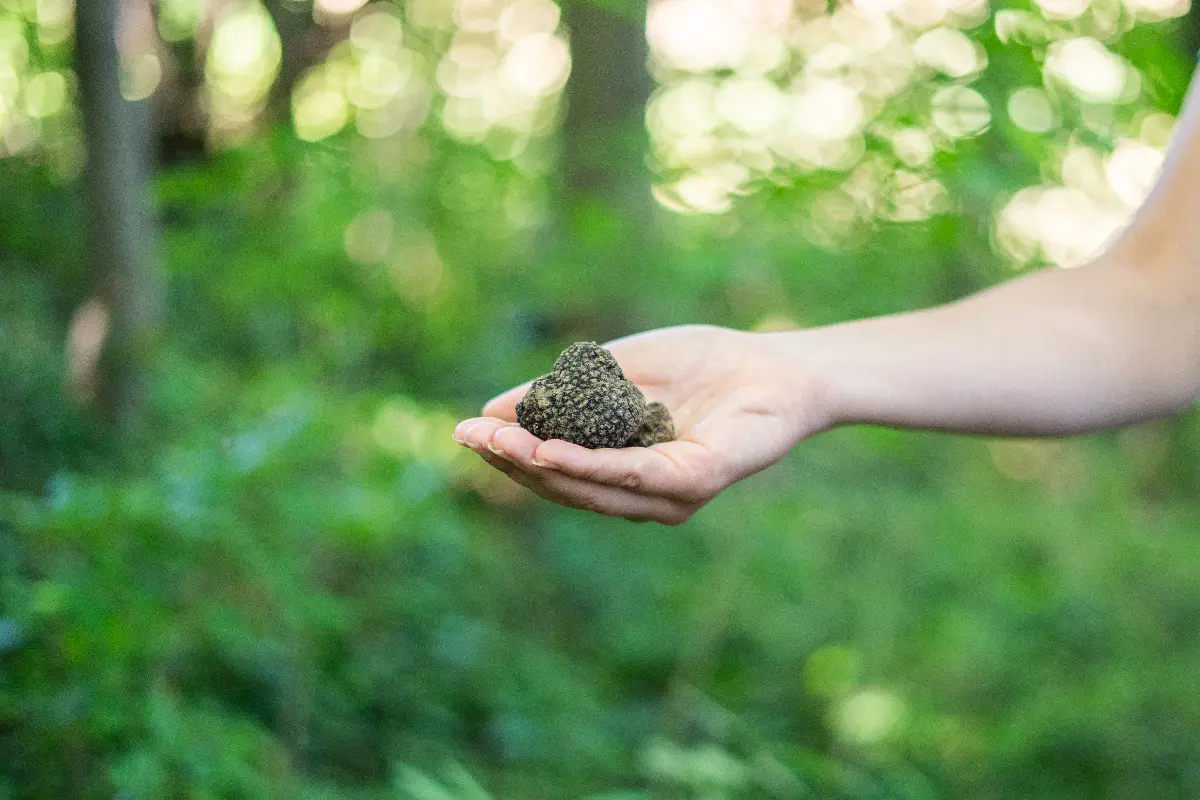
A real treasure hunt
Pushing aside the nettles and blackberry vines, we enter the forest, following Szálka, the award-winning truffle-hunting dog, and his owner. Like in an Indiana Jones adventure film – it’s no exaggeration to say you are off into the wilderness in search of treasure. Our pulse is also beating faster. Only the mosquitoes disturb the tense concentration on this hot June day – but that doesn’t distract the truffle-hunting guides. They immediately get to work, and Balázs and his dog understand each other even in half-words.
“We like to call this part of the forest the larder,” says our host.“
“This is an area where the calcium-rich soil structure means that valuable truffles can almost always be found.”Szálka immediately gave an enthusiastic shout, even though we had only walked 20 metres through the trees. The first Tuber aestivum, or summer truffle, appears and can be harvested from early June until the beginning of winter. Our prizewinning “super nose” helper marks first a trifla the size of a walnut, then immediately a trifla twice as big in the ground.
“The summer truffle is one of our favourite varieties, but we also collect the more succulent Burgundy (Tuber uncinatum), the very intensely scented large-spore truffle (Tuber macrosporum), of which we have already hunted a 330 gram one, and finally the king of the triflas, the Azistria truffle (Tuber magnatum),” says Balázs Hárságyi.
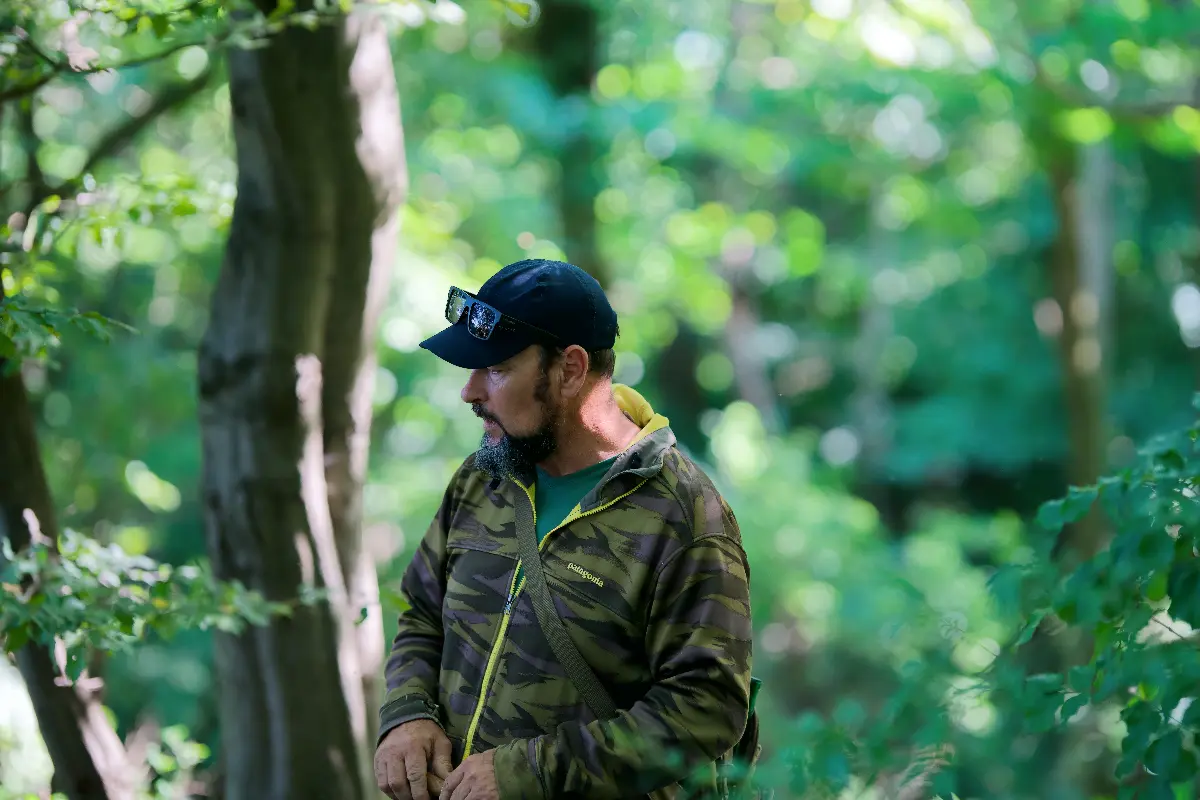
Szálka does not stop for a moment while working, his nose constantly scanning the ground. The dog only points out mature or overripe mushrooms, wisely overlooking young triflas. The reason is that if the truffle is taken out of the ground while it is still immature, it cannot be eaten, but the ‘bad’, or overripe, chewed mushrooms can be used to encourage reproduction. Balázs grinds the latter, enriches them with lime and sawdust, and then spreads them back into the forest during the winter months, so that in 5 years they can grow into new mushrooms. We see plenty of them, too; one tasted by a small rodent, another chewed on by the larvae of truffle flies – not a pretty sight, but ultimately they are also there to spread the spores.

A well-deserved rest after hunting at Trifla Tasting House
When we have enough treasure in the bag, we head back to fill our now-overflowing bellies with mushroom-inspired food. Because truffles are good fresh. As Balázs puts it, truffles carry the risk of botulism, so they can only be preserved safely with considerable heat treatment. But heating it above 50 degrees will damage its aroma and cause it to lose its characteristic flavour. Therefore, the various oils and creams are mostly artificially flavoured products.
As we head back to the Tasting House – the show kitchen is busy preparing the delicacies. Delicious spreads, a selection of cheeses made on the farm, eggs and other vegetables are served alongside sourdough bread, and a hot meal is also prepared for lunch or dinner.There are always truffles on the plate, and the dishes are made from their own small-scale vegetables, home-raised rabbit and chicken, and ingredients from the forest and fields of the area. After a bite to eat, we can even stay at Balázs and Szilvi: we can sleep in the beautiful little Parázs Guesthouse, a listed building under monument protection, in one of the three apartments that can accommodate up to 14 people.

Whether you come with family, friends or colleagues, Triflafater has plenty to suit all tastes: great food and snacks, hiking and hunting, or relaxing in the guest house – where you can even take a dip in the pool in the summer heat.
